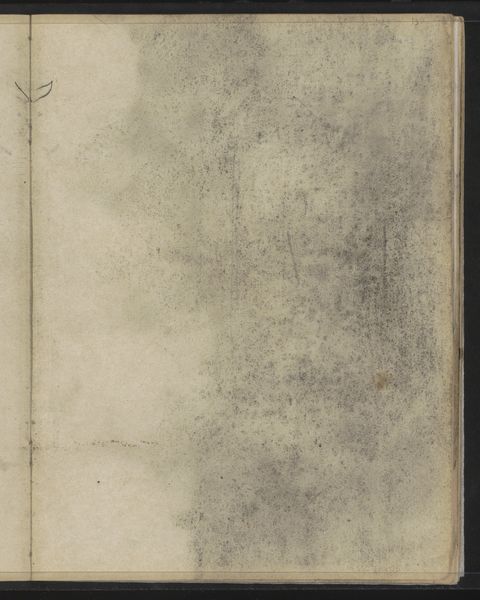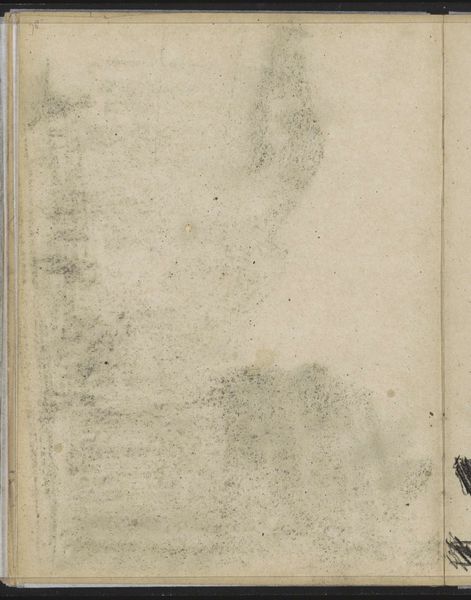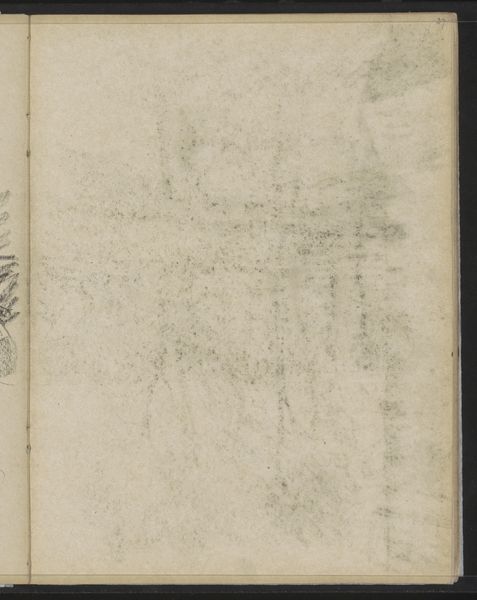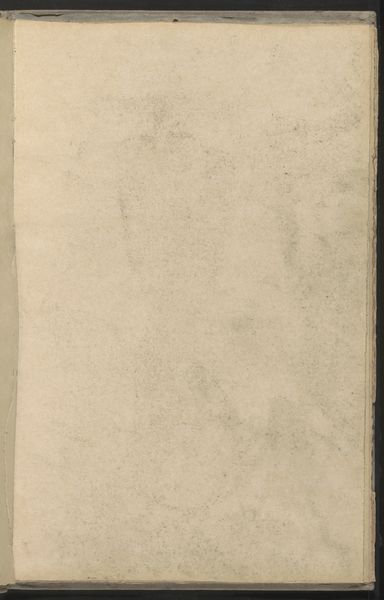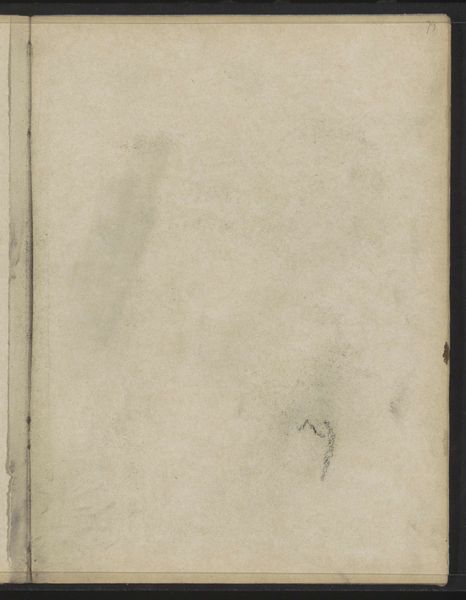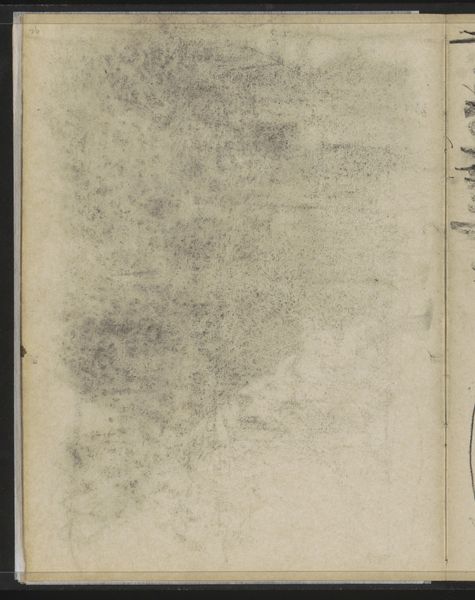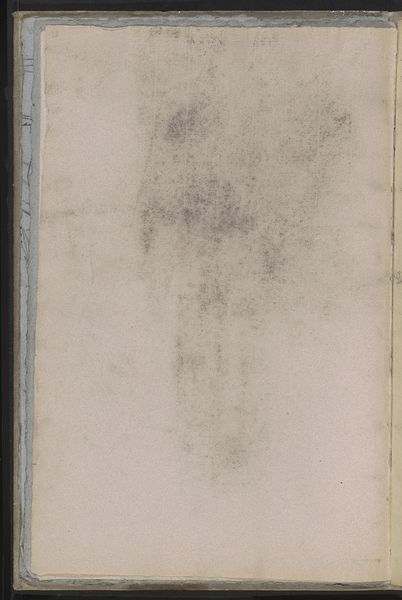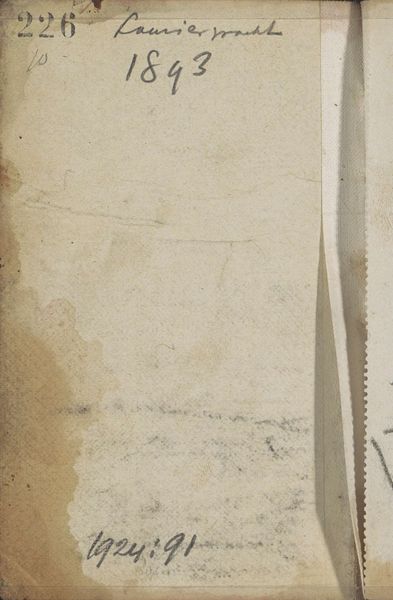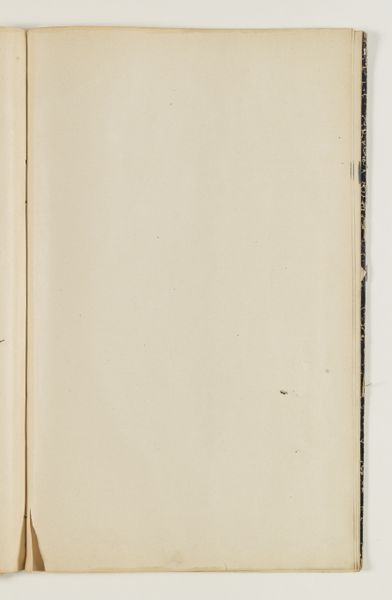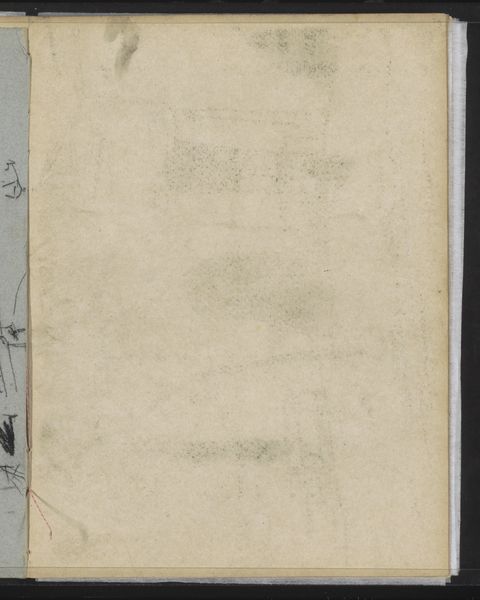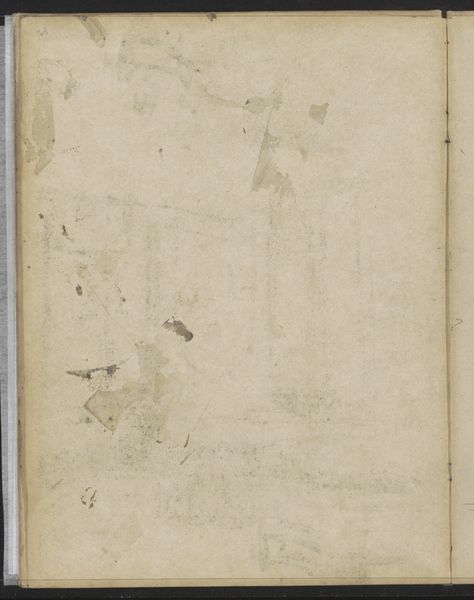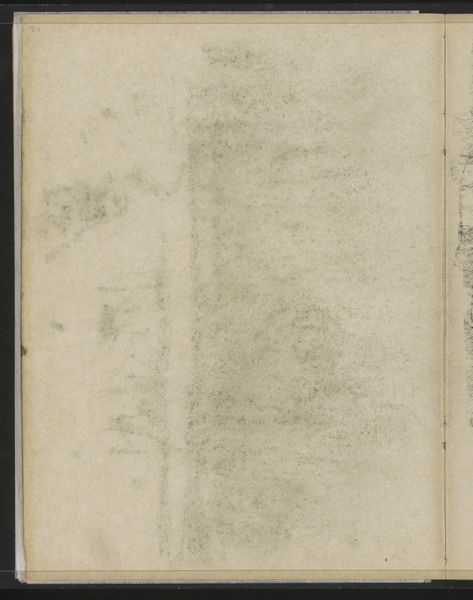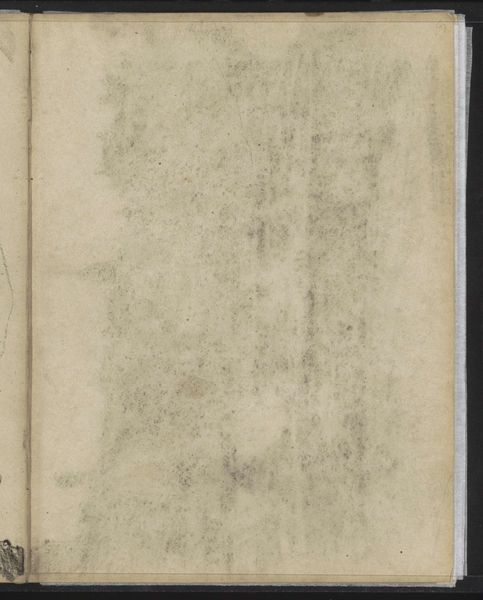
drawing, paper, pencil
#
drawing
#
narrative-art
#
impressionism
#
landscape
#
paper
#
form
#
pencil
#
line
Copyright: Rijks Museum: Open Domain
Editor: Here we have "Abklatsch van de krijttekening op pagina 18", a drawing made with pencil on paper by Willem Witsen, around 1884 to 1891. The visible smudges and pale coloration evoke a sense of ghostly memory or perhaps even an experiment with form. What do you see in this work, focusing on its intrinsic artistic qualities? Curator: The first thing I note is the interplay between line and plane. Witsen has created a drawing that is as much about the marks left on the paper as it is about representing a specific subject. The ghostly traces you mentioned activate the surface of the paper, compelling the eye to examine the subtle gradations of tone and texture. Consider the composition: a dynamic tension exists between the sketch on the left page, defined by a set of vertical lines and structural patterns, and the apparent emptiness of the other, a large expansive field. The 'narrative', such as it is, hinges on *form* above all else. What does that suggest to you? Editor: I suppose it suggests the process is as important, maybe more so, than the subject, emphasizing materiality itself. Do you think the 'line' and lack of detail places it within a certain artistic category or school? Curator: Certainly. We might view this piece within the lineage of Impressionism, with its emphasis on capturing fleeting moments and subjective impressions. But consider too the structural underpinning – the deliberate arrangement of positive and negative space. It verges, at times, on abstraction. It is a compelling formal study. Editor: I see how looking closely at the formal aspects really unlocks the image. It feels less like a simple sketch and more like an investigation of what drawing can be. Curator: Precisely. The visible process elevates the object. Form becomes the content itself.
Comments
No comments
Be the first to comment and join the conversation on the ultimate creative platform.
